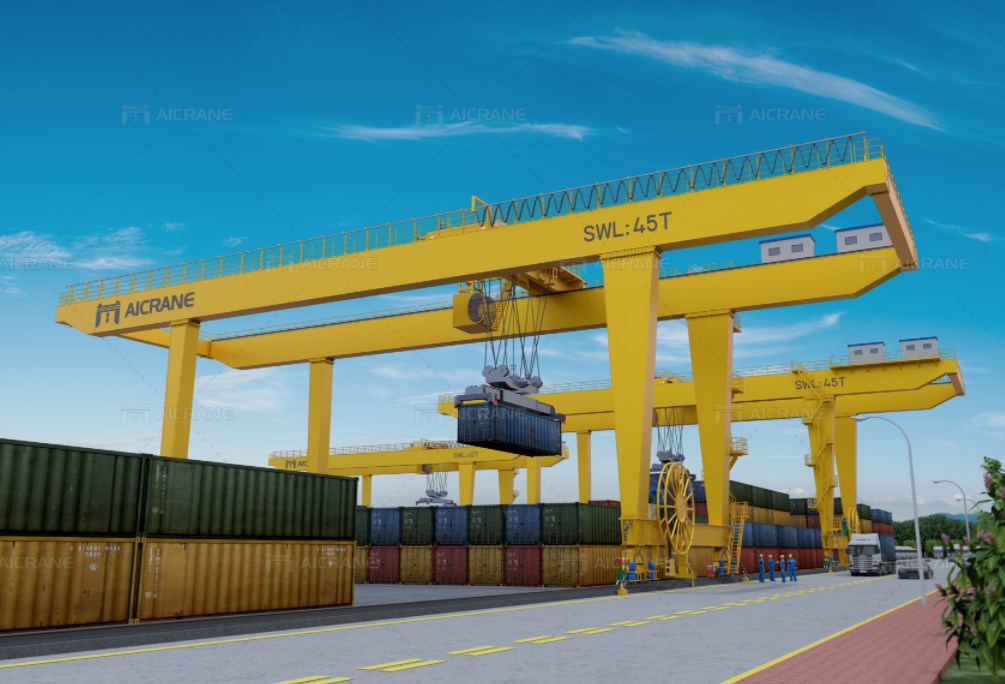Safety Features and Considerations in the Container Gantry Crane Structure
Container gantry cranes are the workhorses of shipping terminals and ports, efficiently moving containers with precision and speed. However, their size and power make them potentially hazardous machines. Ensuring the safety of both workers and cargo is paramount in any material handling operation involving these colossal structures. In this article, we will explore the safety features and considerations integrated into the container gantry crane structure.
1. Structural Design for Stability:
The first and foremost safety consideration in container gantry crane structure is stability. These cranes are designed with a wide stance and strong support structures to prevent tipping over, even when lifting heavy loads. A stable base is fundamental for safe crane operations.
2. Overload Protection:
Overloading a crane can have catastrophic consequences. To prevent this, modern gantry cranes are equipped with overload protection systems that automatically shut down the lifting operation if the load exceeds the crane's rated capacity. This feature safeguards the crane's structural integrity.
3. Anti-Sway Systems:
Container gantry cranes often need to transport containers from ships to the terminal or vice versa. Anti-sway systems are employed to minimize load swinging during transport. These systems ensure precise and controlled movements, reducing the risk of collisions or cargo mishandling.
4. Collision Avoidance Systems:
Collision avoidance systems use sensors and cameras to detect obstacles or potential hazards in the crane's path. When an obstacle is detected, these systems can trigger an immediate stop or corrective action, preventing accidents and damage to the crane, cargo, or infrastructure.
5. Emergency Stop Mechanisms:
Every container gantry crane is equipped with emergency stop buttons or switches that allow operators to halt all crane movements instantly in case of an emergency. These mechanisms provide a rapid response to critical situations.
6. Wind Sensors and Shutdown:
Wind can significantly affect the stability and safety of a gantry crane. Many modern cranes are fitted with wind sensors that can trigger an automatic shutdown or restrict crane operations if wind speeds exceed safe limits.
7. Load Monitoring and Control:
Load monitoring systems continuously assess the load's weight and distribution. If an imbalance is detected, the crane can adjust its operations to maintain equilibrium, reducing the risk of accidents caused by unevenly distributed loads.
8. Inspections and Maintenance:
Regular inspections and maintenance routines are essential for ensuring the continued safety of a container gantry crane structure. This includes checking for signs of wear and tear, corrosion, and fatigue in critical structural components.
9. Operator Training:
Well-trained and certified operators are a crucial part of the safety equation. Operators must understand the crane's operation, safety protocols, and emergency procedures to react effectively in any situation.
10. Safety Culture and Awareness:
Safety should be ingrained in the workplace culture. All personnel working in proximity to gantry cranes, not just operators, should be aware of the risks and safety procedures. Regular safety drills and training sessions can reinforce this culture of safety.
In conclusion, container gantry crane structures are designed with an array of safety features and considerations to minimize risks and ensure the well-being of workers and the protection of valuable cargo. However, safety also depends on vigilant operation, proper maintenance, and a commitment to a safety-first mindset within the workplace. By integrating these safety features and fostering a safety-conscious environment, container terminals and ports can maintain efficient and secure operations in the world of global shipping.



Comments
Post a Comment